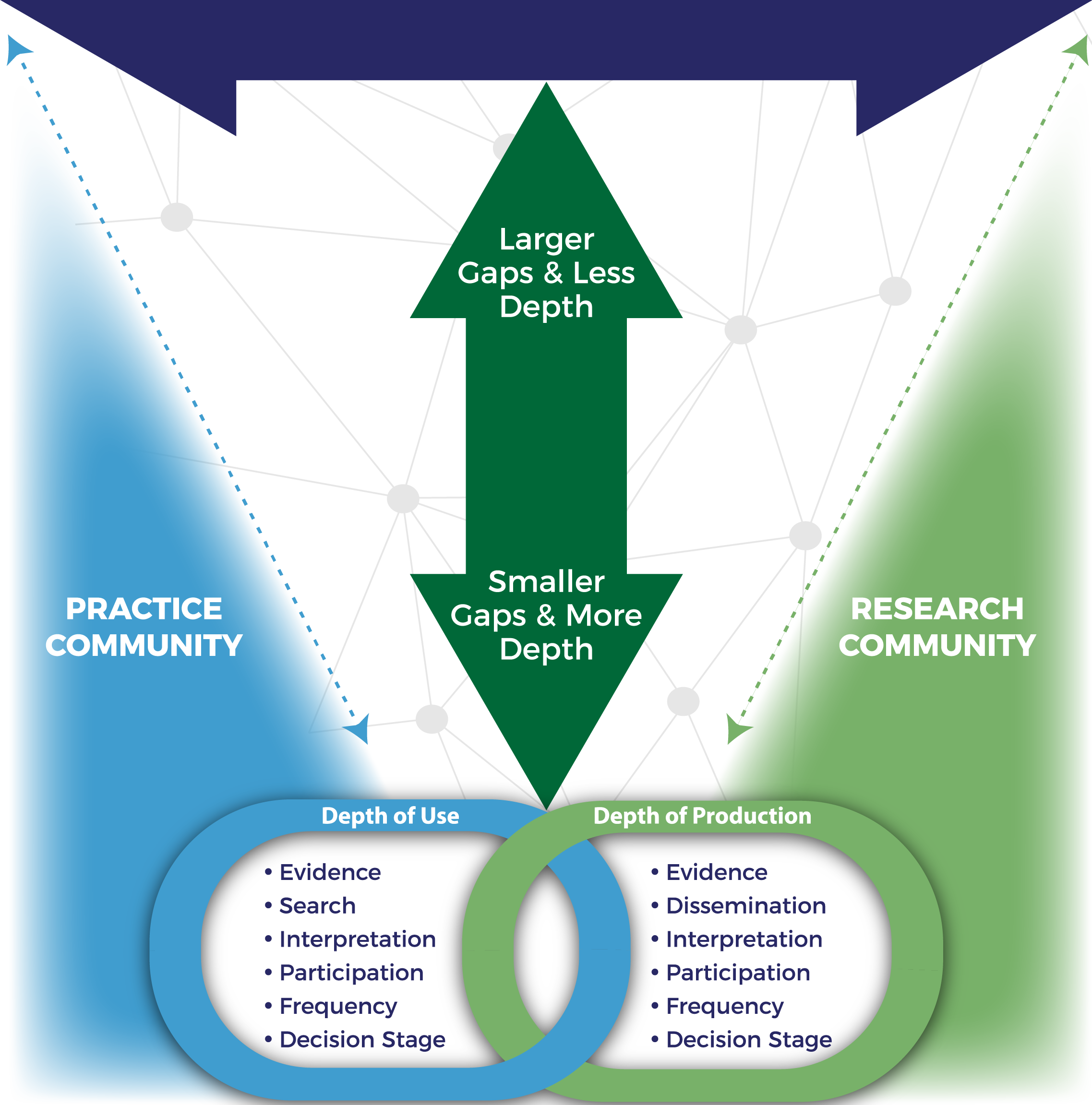Not all research use is created equal.
“Depth of Research Use” refers to both the purpose and practice of research use—the complex ways in which evidence use is meaningful, systematic, and likely to generate improvements in policy and practice.

Practice
Practice is how evidence is used, including whether decision-makers simply collect and refer to evidence to show compliance with accountability requirements, or if they engage with evidence in deeper, more sophisticated ways.
Six dimensions of depth of use
Depth of use also acknowledges the complexity of both decision-making and evidence use. The six dimensions of depth of use in practice are understood as individual continua, where research use behavior might be found at differing points for each dimension. Depth of use as a larger construct attempts to capture the degree to which research meaningfully and systematically informs decisions about educational practice.
- Evidence: We are interested in both the use of scientific research and its integration with other forms of knowledge that influence decision-making. We, therefore, conceptualize the evidence continuum as ranging from no engagement with scientific research on one end to substantially inclusive of scientific research on the other.
- Search: Use of research entails finding relevant research sources, which has two important and related aspects: the nature and extent of search. At one end of the search continuum, decision-makers may do a very limited search or focus on a resource with which they are already familiar. At the other end, a decision-maker seeks out multiple sources of research and synthesizes them to inform decision-making.
- Interpretation: Evidence must be interpreted and transformed from information into knowledge, which requires the critical evaluation of information to determine its relevance for decision needs. The spectrum of interpretation ranges from uncritical on one end to critical on the other.
- Participation: Understanding who participates in research use during decision-making is important because individuals’ working knowledge, ideologies, information, interests, and their interaction and negotiation with other participants influences how evidence is interpreted. To capture variability in participation, the spectrum includes no one or few individuals on one end and collaborative groups or teams on the other.
- Frequency: In describing the depth of evidence use, frequency is an indicator of the extent to which research informs decisions. The regularity with which research evidence is brought to bear on decisions may be an indicator of greater or lesser systematic use. The spectrum of frequency ranges from rarely on one end, to regularly on the other.
- Stage of Decision-Making: Research may play a role in each or any single stage of decision-making, such as problem identification, search/design, and choice. The timing of evidence use may be an indicator of the type of research use occurring and its goal. The spectrum ranges from never on one hand, to throughout the process on the other.